Herding Group
Herding Group is the name of a breed group of dogs, used by kennel clubs to classify a defined collection of dog breeds. It does not refer to one particular type of dog. How the Herding Group is defined varies among kennel clubs, and different kennel clubs may not include the same breeds in their Herding Group. Some kennel clubs do not use the term Herding Group. The international kennel club association, the Fédération Cynologique Internationale, does not have a Herding Group, and includes most pastoral dogs in Group 1 Sheepdogs and Cattle Dogs (except Swiss Cattle Dogs) and Group 2 Pinscher and Schnauzer - Molossoid Breeds - Swiss Mountain and Cattle Dogs.[1]
Herding dogs
Herding dogs assist humans in the movement of livestock, especially cattle, sheep, goats and reindeer. Herding dogs are not livestock guardians, a separate type of dog that also works with livestock.
The vast majority of herding dogs, as household pets, never cross paths with a farm animal. Nevertheless, pure instinct prompts many of these dogs to gently herd their owners, especially the children of the family. In general, these intelligent dogs make excellent companions and respond beautifully to training exercises. Consequently urban owners with no access to livestock can train herding commands through herding games.[2] Furthermore, herding instincts and trainability can be measured at noncompetitive herding tests. Herding dogs that exhibit basic herding instincts can be trained to compete in herding trials.[2]
The diversity in morphology and temperament among herding dog breeds has much to do with the different demands placed on the dogs in the course of their work. The Australian Cattle Dog and the Welsh Corgi have a temperament and structure suited for "heeling" stubborn cattle; their aggressive confidence and willingness to nip and bark are especially useful in the cramped confines of a stockyard. Border Collies herd with a silent and non-aggressive "eye"—an intense stare and crouch that mimics a stalking predator—which makes them suited for working flighty sheep at great distances from the shepherd over varied terrain. Despite the name and classification as a herding dog, the German Shepherd is genetically clustered with the guardian breeds, and in the century of its existence has been used more for utility work than for stock herding.
The fluid and changing demands of herding work mean that despite individual breeds being better suited to specific climates, stock, or tasks; many herding dogs are multi-taskers suitable for a wide variety of jobs.
Herding Group breeds
American Kennel Club
The American Kennel Club Herding Group, created in 1983, is the newest AKC classification. It comprises herding dogs and livestock guardian dogs which were formerly members of the Working Group.
Dogs in the American Kennel Club 'Herding Group are:[3]
| | Australian Cattle Dog |  | Australian Shepherd | 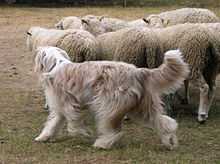 | Bearded Collie |
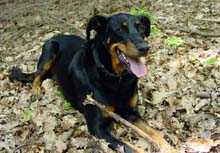 | Beauceron | 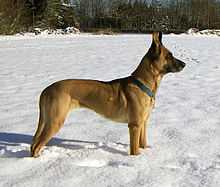 | Belgian Malinois | 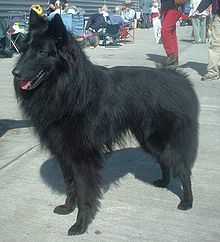 | Belgian Sheepdog |
 | Belgian Tervuren |  | Border Collie | 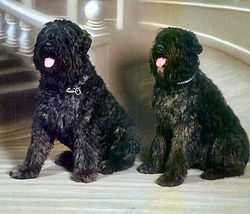 | Bouvier des Flandres |
 | Briard | 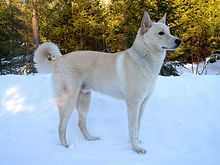 | Canaan Dog | 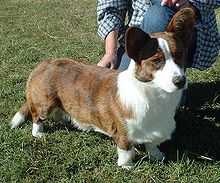 | Cardigan Welsh Corgi |
| | Collie |  | Entlebucher Mountain Dog |  | Finnish Lapphund |
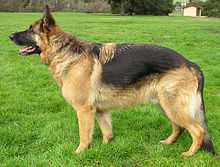 | German Shepherd Dog |  | Icelandic Sheepdog |  | Norwegian Buhund |
| | Old English Sheepdog |  | Pembroke Welsh Corgi | 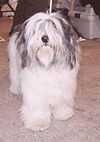 | Polish Lowland Sheepdog |
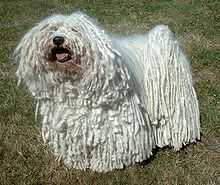 | Puli | 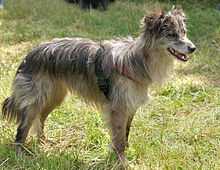 | Pyrenean Shepherd |  | Shetland Sheepdog |
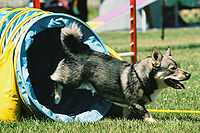 | Swedish Vallhund |
See also
- Breed Groups (dog)
- Pastoral Group
- Working Group (dogs)
References
- ↑ Fédération Cynologique Internationale breed nomenclature
- ↑ 2.0 2.1 Hartnagle-Taylor, Jeanne Joy; Taylor, Ty (2010). Stockdog Savvy. Alpine Publications. ISBN 978-1-57779-106-5.
- ↑ American Kennel Club Herding Group